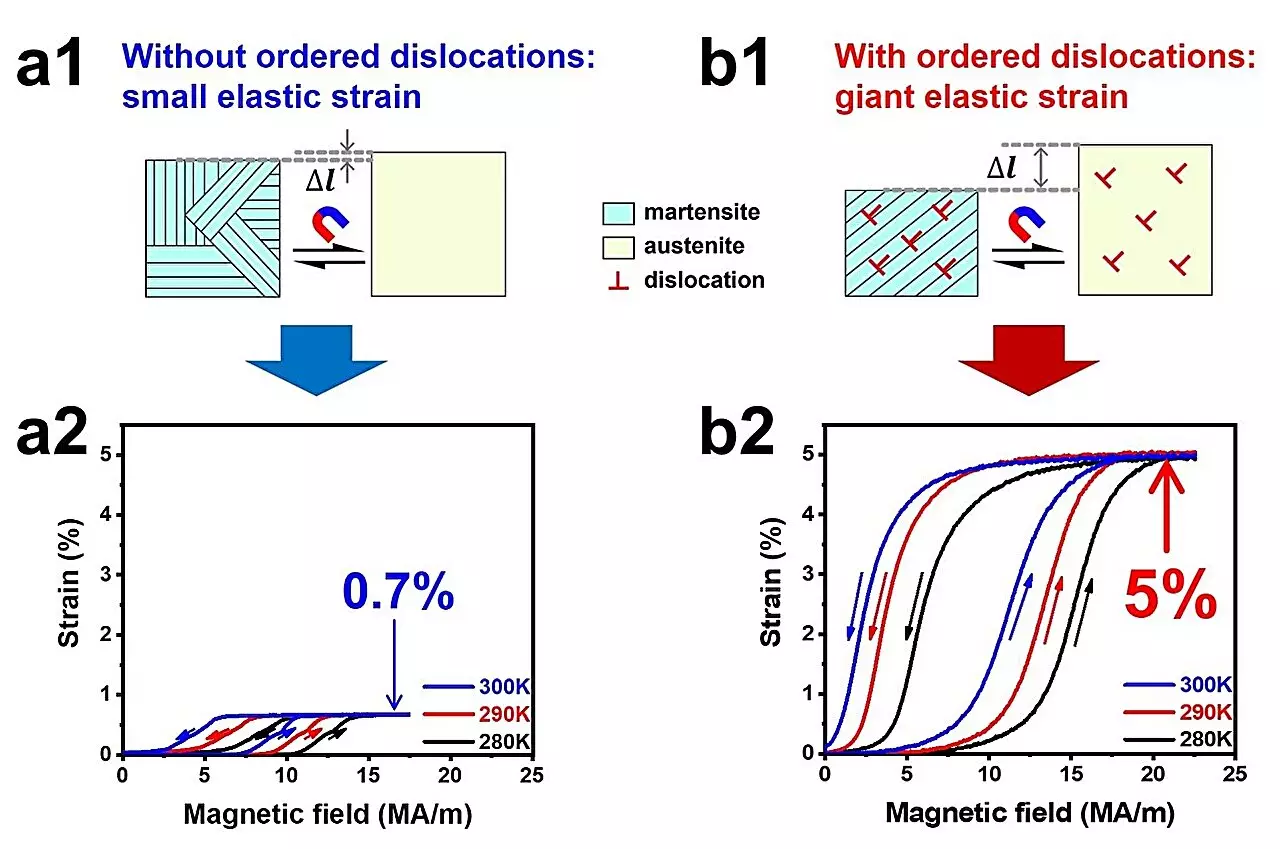A recent breakthrough in materials science has led to the development of a single crystal with a remarkable 5% magneto-superelasticity. This innovative discovery has opened up new possibilities for contactless material operation and the creation of highly efficient energy transducers.
The research team behind this groundbreaking discovery, led by Prof. Jiang Chengbao and Prof. Wang Jingmin, utilized stress-constrained transition cycling (SCTC) training to introduce ordered dislocations with a specific orientation in the Ni34Co8Cu8Mn36Ga14 single crystal. These ordered dislocations played a crucial role in influencing the formation of specific martensitic variants during the reversible transformation induced by a magnetic field.
Key Findings
Through phase field simulations, it was confirmed that the internal stress generated by these organized dislocations was instrumental in shaping the preferred martensitic variants. By combining reversible martensitic transformation with preferential orientation, the single crystal was able to achieve an extraordinary 5% magneto-superelasticity.
Furthermore, a device utilizing a pulsed magnetic field was designed using this single crystal. The device was able to achieve a large stroke at room temperature with a pulse width of 10 ms, showcasing the potential for rapid response in applications. With an 8 ms pulse, the device exhibited a delay of only about 0.1 ms, highlighting the practical implications of this research.
The development of giant magneto-superelasticity in the Ni34Co8Cu8Mn36Ga14 single crystal represents a significant advancement in the field of materials science. This research not only demonstrates the potential for high-performance functional materials through defect engineering but also paves the way for the creation of new large stroke actuators and energy-efficient transducers. Prof. Wang aptly describes this work as an “attractive strategy to access high-performance functional materials” and underscores the importance of continued exploration and innovation in materials science.


Leave a Reply